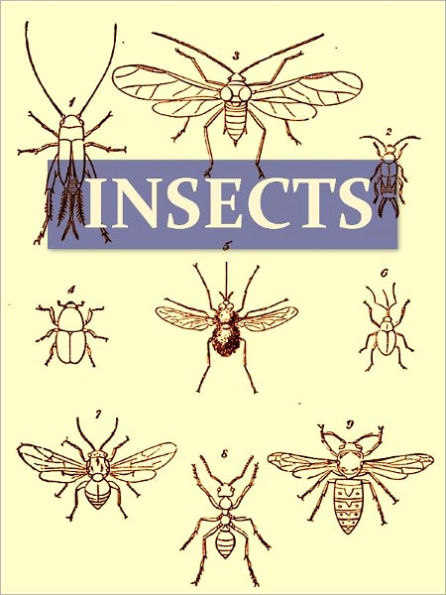This edition features
• illustrations
• a linked Table of Contents and linked Footnotes
CHAPTER I.
THE CLASSIFICATION OF INSECTS.
Introduction.—Stages in the Life of an Insect.—Classification of Insects.—Characters derived from the Wings; from the parts of the Mouth; from the Metamorphoses.—The Classes of Insects: Hymenoptera, Strepsiptera, Coleoptera, Euplexoptera, Orthoptera, Thysanoptera, Neuroptera, Trichoptera, Diptera, Aphaniptera, Heteroptera, Homoptera, Lepidoptera
CHAPTER II.
THE INFLUENCE OF EXTERNAL CONDITIONS ON THE FORM AND STRUCTURE OF LARVÆ.
Larvæ depend partly on the group to which they belong.—Wood-eating Larvæ.—Larvæ of Lamellicorns.—Larvæ depend also in part on mode of life.—Larvæ of Hymenoptera, of Sirex; of Tenthredo; of Ichneumons; of Bees.—Rudimentary legs of Bee Embryo.—Beetles, Weevils, Scolytus, Crioceris, Sitaris, Metamorphoses of Pteromalidæ. Platygaster, Polynema.—Influence of external conditions.—Developmental and adaptive Metamorphoses
CHAPTER III.
THE NATURE OF METAMORPHOSES.
The life history of an Insect must be considered as a whole.—Vagueness of the term Larva.—Some larvæ much more advanced than others.—Organs develope in different order, in different groups.—Suppressed stages.—Apod condition of Phryganea; of Aphis; of xiiChrysopa.—Libellulidæ.—Donacia.—Spiders.—Myriapods.—Apod stage of Homomorphous Insects once probably longer than now.—Suppression of embryonic stages.—Metamorphoses of Hydroida, Crustacea, Isopods, and Amphipods.—Echinoderms.—Variations in development induced by the influence of external conditions.
CHAPTER IV
THE ORIGIN OF METAMORPHOSES.
Origin of Metamorphoses.—Views of Messrs. Kirby and Spence.—Nature of the question.—Young animals often more similar than mature.—Views of Darwin, Herbert Spencer, Johannes Müller, Fritz Müller, and Agassiz.—Effect of size of egg.—Insects leave the egg in a more or less developed condition.—Consideration of pupal condition.—Quiescence of pupa.—Period of quiescence at each moult.—Changes not so abrupt as generally supposed.—Change in mouth-parts.—Difficulty in reference to Darwinian theory.—Mouth-parts of Campodea and Collembola, as intermediate between the mandibulate and haustellate types.—Change in mouth-parts as connected with pupal conditions.—Origin of wings.—Use of wings under water.—Connection of metamorphoses with alternation of generations.—Parthenogenetic larvæ of Cecidomyia.—In alternation of generations one form always agamic.—Dimorphism and Dieidism.—Summary and Conclusions
CHAPTER V
THE ORIGIN OF INSECTS.
The Origin of Insects.—Mistaken views of Darwinian theory.—Natural selection a vera causa.—Application of Darwin’s views to Insects.—Similarity of young Crustacea as compared with mature forms; ditto in Insects.—Type of Insecta.—Two principal types of larvæ: Hexapod and Apod.—Conclusions to be drawn from them.—Campodea the modern representative of the Insect-stock.—Campodea, perhaps derived from Tardigrade.—Vermiform or Apod type of larva.—Views of Fritz Müller, Brauer, and Packard.—Represents a still earlier ancestor.—Modern representatives.—Notommata, Albertia, Lindia.—Earlier forms difficult to trace.—Lowest forms of animal life.—Yolk-segmentation.—Embryology and Evolution.—Light thrown by the evolution of the individual on that of the species



